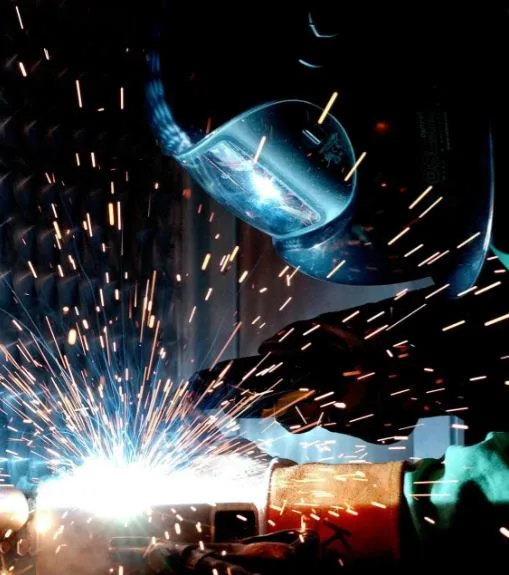5 Ways Fleets Are Slashing Maintenance Costs with Preventative Fuel Treatment
Operating a commercial fleet comes with plenty of challenges, but one of the most consistent pain points is managing maintenance costs. From engine breakdowns to injector clogs and unplanned downtime, poor fuel quality can silently chip away at your budget. That’s why more and more fleet managers are turning to preventative fuel treatment to stay ahead of costly repairs.
This approach isn’t just about improving fuel economy (although that’s a nice bonus). It’s about long-term savings and proactive care for your vehicles. In this post, we’ll break down five key ways fleets are cutting maintenance expenses using fuel treatments with a special spotlight on diesel combustion catalyst technology that’s helping reshape the industry.
1. Reducing Injector and Fuel System Failures
Let’s start with the heart of the fuel system: injectors. When diesel injectors get clogged with carbon, varnish, or other deposits, it’s only a matter of time before performance tanks and repair bills stack up. Unchecked buildup can lead to uneven spray patterns, inefficient combustion, and eventually expensive component replacements.
Preventative fuel treatment helps avoid this scenario by keeping injectors clean from the start. Many high-quality treatments contain detergents or catalysts that dissolve carbon before it causes damage. This reduces the wear and tear on injectors and fuel pumps, cutting down the frequency of service intervals.
The result? Fleets can keep vehicles on the road longer and dramatically reduce their per-mile maintenance costs.
2. Extending Engine Life and Reducing Wear
Your diesel engine is built to run hard but over time, residue from incomplete combustion can do real harm. That’s where the right diesel combustion catalyst comes into play.
These fuel additives enhance the combustion process at the molecular level, helping diesel burn more completely and efficiently. When fuel is burned more thoroughly, less carbon is left behind in the form of soot, acids, or sludge that would otherwise find its way into the crankcase or exhaust system.
That means cleaner valves, pistons, and EGR systems, all of which translate into less downtime for cleaning, fewer oil changes, and fewer repairs related to wear. Some fleets have even reported extending engine rebuild timelines simply by using a consistent preventative fuel treatment protocol.
3. Minimizing DPF Regeneration and Failures
The diesel particulate filter (DPF) is another critical (and costly) component in modern diesel engines. It’s designed to capture soot particles before they exit the tailpipe—but it also requires periodic regeneration to burn off the buildup. The problem? Regens waste fuel and time, and if ignored or overused, they can lead to filter damage or even full replacements.
Fuel treatments that include a diesel combustion catalyst can drastically reduce the soot that reaches the DPF. With a more complete burn occurring in the combustion chamber, there’s simply less material to filter out. That leads to fewer regens, less heat stress on the system, and extended DPF lifespan.
Fleets running in stop-and-go environments think delivery trucks or municipal vehicles stand to benefit the most, since these engines often struggle to maintain the right conditions for passive regeneration. Reducing soot from the source is a game-changer for maintenance planning.
4. Preventing Cold Weather Fuel Problems
If your fleet operates in colder climates, you know that winter brings its own set of headaches. Gelling, water contamination, and wax crystal formation can shut a vehicle down fast—sometimes even before it leaves the yard.
A preventative fuel treatment formulated for cold weather can help mitigate these risks by improving low-temperature flow characteristics, dispersing water, and protecting against ice formation. That means fewer calls to roadside assistance, fewer emergency fuel filter changes, and less frustration for drivers and managers alike.
Even in regions that don’t see extreme cold, sudden temperature swings can create condensation in fuel tanks, leading to microbial growth and rust. The right additive will not only treat the fuel but also condition the tank, helping you avoid corrosion-related fuel system failures later.
5. Improving Fuel Efficiency and Reducing Emissions
While this point touches on operational savings rather than maintenance costs directly, it’s impossible to ignore. Better combustion and cleaner engines don’t just mean fewer breakdowns they also lead to improved miles per gallon.
A diesel combustion catalyst can increase thermal efficiency by helping the fuel burn at a more optimal temperature and rate. That means more power from each gallon of diesel and lower exhaust temperatures, which in turn places less strain on emission control systems.
Plus, cutting fuel consumption also means fewer carbon emissions. That’s not just good for compliance it’s good for business. Fleets can demonstrate environmental responsibility, appeal to eco-conscious clients, and even take advantage of incentive programs in certain states or regions.
All this translates into vehicles that run cleaner, longer, and more reliably delivering long-term savings far beyond what’s immediately visible on the maintenance ledger.
Why Preventative Fuel Treatment Is a Smart Long-Term Investment
Some fleet managers hesitate to invest in fuel treatments because they’re seen as just another line item. But when you look at the data, it’s clear that regular use of a fuel additive especially those featuring a diesel combustion catalyst can pay off in major ways.
Let’s break it down:
- Less downtime means more deliveries, more jobs completed, and fewer rental vehicles.
- Fewer repairs mean reduced labor costs and fewer surprises in the monthly budget.
- Longer-lasting engines and components extend the lifespan of your fleet, pushing out the need for capital-intensive replacements.
And don’t forget the intangible benefits: happier drivers (less roadside breakdowns), better compliance with emissions regulations, and a reputation for reliability in your industry.
Choosing the Right Fuel Treatment for Your Fleet
Of course, not all fuel additives are created equal. When choosing a preventative solution, look for products that have been field-tested with fleets like yours and that list a diesel combustion catalyst as a core ingredient. It’s also worth consulting with your fuel supplier or a trusted fleet maintenance advisor to match the treatment to your fuel type and operating conditions.
Ask yourself:
- Does this product clean injectors and combustion chambers?
- Will it help reduce soot, sludge, and harmful emissions?
- Has it shown real-world results in extending maintenance intervals?
The answers to these questions will guide you toward a preventative fuel treatment strategy that works not just in theory, but in practice.
Final Thoughts
In today’s fleet world, every mile and every dollar counts. With rising fuel prices and increasingly complex engine systems, there’s no room for guesswork when it comes to protecting your assets. That’s why preventative fuel treatment especially when powered by a diesel combustion catalyst is becoming the go-to strategy for fleet managers aiming to reduce maintenance costs without cutting corners.
It’s not just about cleaning fuel; it’s about optimizing your entire system from the inside out. The fleets that understand this are already seeing the difference in their maintenance reports and their bottom line.




